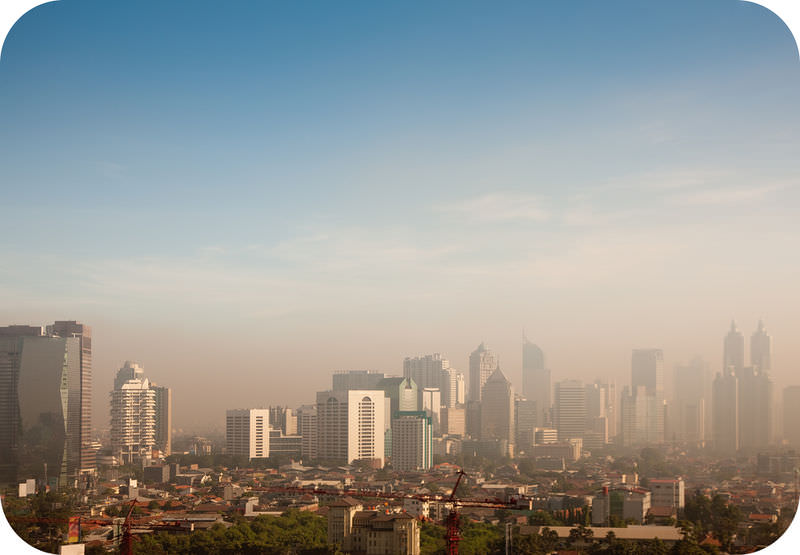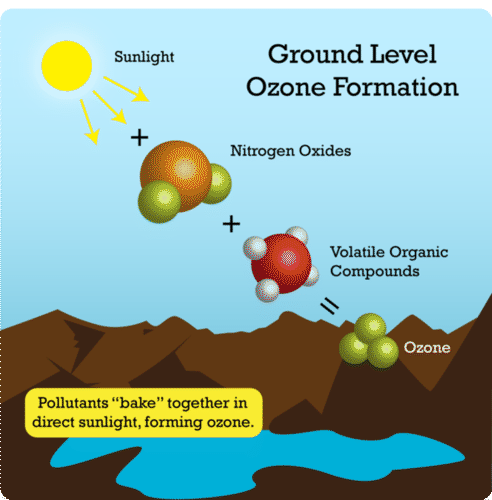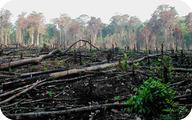10.23: Types of Air Pollution
- Page ID
- 5500
\( \newcommand{\vecs}[1]{\overset { \scriptstyle \rightharpoonup} {\mathbf{#1}} } \)
\( \newcommand{\vecd}[1]{\overset{-\!-\!\rightharpoonup}{\vphantom{a}\smash {#1}}} \)
\( \newcommand{\id}{\mathrm{id}}\) \( \newcommand{\Span}{\mathrm{span}}\)
( \newcommand{\kernel}{\mathrm{null}\,}\) \( \newcommand{\range}{\mathrm{range}\,}\)
\( \newcommand{\RealPart}{\mathrm{Re}}\) \( \newcommand{\ImaginaryPart}{\mathrm{Im}}\)
\( \newcommand{\Argument}{\mathrm{Arg}}\) \( \newcommand{\norm}[1]{\| #1 \|}\)
\( \newcommand{\inner}[2]{\langle #1, #2 \rangle}\)
\( \newcommand{\Span}{\mathrm{span}}\)
\( \newcommand{\id}{\mathrm{id}}\)
\( \newcommand{\Span}{\mathrm{span}}\)
\( \newcommand{\kernel}{\mathrm{null}\,}\)
\( \newcommand{\range}{\mathrm{range}\,}\)
\( \newcommand{\RealPart}{\mathrm{Re}}\)
\( \newcommand{\ImaginaryPart}{\mathrm{Im}}\)
\( \newcommand{\Argument}{\mathrm{Arg}}\)
\( \newcommand{\norm}[1]{\| #1 \|}\)
\( \newcommand{\inner}[2]{\langle #1, #2 \rangle}\)
\( \newcommand{\Span}{\mathrm{span}}\) \( \newcommand{\AA}{\unicode[.8,0]{x212B}}\)
\( \newcommand{\vectorA}[1]{\vec{#1}} % arrow\)
\( \newcommand{\vectorAt}[1]{\vec{\text{#1}}} % arrow\)
\( \newcommand{\vectorB}[1]{\overset { \scriptstyle \rightharpoonup} {\mathbf{#1}} } \)
\( \newcommand{\vectorC}[1]{\textbf{#1}} \)
\( \newcommand{\vectorD}[1]{\overrightarrow{#1}} \)
\( \newcommand{\vectorDt}[1]{\overrightarrow{\text{#1}}} \)
\( \newcommand{\vectE}[1]{\overset{-\!-\!\rightharpoonup}{\vphantom{a}\smash{\mathbf {#1}}}} \)
\( \newcommand{\vecs}[1]{\overset { \scriptstyle \rightharpoonup} {\mathbf{#1}} } \)
\( \newcommand{\vecd}[1]{\overset{-\!-\!\rightharpoonup}{\vphantom{a}\smash {#1}}} \)
\(\newcommand{\avec}{\mathbf a}\) \(\newcommand{\bvec}{\mathbf b}\) \(\newcommand{\cvec}{\mathbf c}\) \(\newcommand{\dvec}{\mathbf d}\) \(\newcommand{\dtil}{\widetilde{\mathbf d}}\) \(\newcommand{\evec}{\mathbf e}\) \(\newcommand{\fvec}{\mathbf f}\) \(\newcommand{\nvec}{\mathbf n}\) \(\newcommand{\pvec}{\mathbf p}\) \(\newcommand{\qvec}{\mathbf q}\) \(\newcommand{\svec}{\mathbf s}\) \(\newcommand{\tvec}{\mathbf t}\) \(\newcommand{\uvec}{\mathbf u}\) \(\newcommand{\vvec}{\mathbf v}\) \(\newcommand{\wvec}{\mathbf w}\) \(\newcommand{\xvec}{\mathbf x}\) \(\newcommand{\yvec}{\mathbf y}\) \(\newcommand{\zvec}{\mathbf z}\) \(\newcommand{\rvec}{\mathbf r}\) \(\newcommand{\mvec}{\mathbf m}\) \(\newcommand{\zerovec}{\mathbf 0}\) \(\newcommand{\onevec}{\mathbf 1}\) \(\newcommand{\real}{\mathbb R}\) \(\newcommand{\twovec}[2]{\left[\begin{array}{r}#1 \\ #2 \end{array}\right]}\) \(\newcommand{\ctwovec}[2]{\left[\begin{array}{c}#1 \\ #2 \end{array}\right]}\) \(\newcommand{\threevec}[3]{\left[\begin{array}{r}#1 \\ #2 \\ #3 \end{array}\right]}\) \(\newcommand{\cthreevec}[3]{\left[\begin{array}{c}#1 \\ #2 \\ #3 \end{array}\right]}\) \(\newcommand{\fourvec}[4]{\left[\begin{array}{r}#1 \\ #2 \\ #3 \\ #4 \end{array}\right]}\) \(\newcommand{\cfourvec}[4]{\left[\begin{array}{c}#1 \\ #2 \\ #3 \\ #4 \end{array}\right]}\) \(\newcommand{\fivevec}[5]{\left[\begin{array}{r}#1 \\ #2 \\ #3 \\ #4 \\ #5 \\ \end{array}\right]}\) \(\newcommand{\cfivevec}[5]{\left[\begin{array}{c}#1 \\ #2 \\ #3 \\ #4 \\ #5 \\ \end{array}\right]}\) \(\newcommand{\mattwo}[4]{\left[\begin{array}{rr}#1 \amp #2 \\ #3 \amp #4 \\ \end{array}\right]}\) \(\newcommand{\laspan}[1]{\text{Span}\{#1\}}\) \(\newcommand{\bcal}{\cal B}\) \(\newcommand{\ccal}{\cal C}\) \(\newcommand{\scal}{\cal S}\) \(\newcommand{\wcal}{\cal W}\) \(\newcommand{\ecal}{\cal E}\) \(\newcommand{\coords}[2]{\left\{#1\right\}_{#2}}\) \(\newcommand{\gray}[1]{\color{gray}{#1}}\) \(\newcommand{\lgray}[1]{\color{lightgray}{#1}}\) \(\newcommand{\rank}{\operatorname{rank}}\) \(\newcommand{\row}{\text{Row}}\) \(\newcommand{\col}{\text{Col}}\) \(\renewcommand{\row}{\text{Row}}\) \(\newcommand{\nul}{\text{Nul}}\) \(\newcommand{\var}{\text{Var}}\) \(\newcommand{\corr}{\text{corr}}\) \(\newcommand{\len}[1]{\left|#1\right|}\) \(\newcommand{\bbar}{\overline{\bvec}}\) \(\newcommand{\bhat}{\widehat{\bvec}}\) \(\newcommand{\bperp}{\bvec^\perp}\) \(\newcommand{\xhat}{\widehat{\xvec}}\) \(\newcommand{\vhat}{\widehat{\vvec}}\) \(\newcommand{\uhat}{\widehat{\uvec}}\) \(\newcommand{\what}{\widehat{\wvec}}\) \(\newcommand{\Sighat}{\widehat{\Sigma}}\) \(\newcommand{\lt}{<}\) \(\newcommand{\gt}{>}\) \(\newcommand{\amp}{&}\) \(\definecolor{fillinmathshade}{gray}{0.9}\)What is a pollution advisory?
Urban areas in sunny locations have pollution advisories. This happens when ozone levels get high. On these days, you should stay indoors or exercise early or late in the day. Drive less and avoid filling your tank.
Air Pollutants
There are two main types of air pollutants: primary and secondary. Most air pollutants come from burning fossil fuels. Some come from burning forests. Some are due to the evaporation of chemicals.
Types of Air Pollutants
There are two basic types of pollutants in the air. They are known as primary pollutants and secondary pollutants.
- Primary pollutants enter the air directly. Some are released by natural processes, like ash from volcanoes. Most are released by human activities.
- Carbon oxides are released when fossil fuels burn.
- Nitrogen oxides form when nitrogen and oxygen combine at high temperatures. This occurs in hot exhausts from vehicles, factories, and power plants.
- Sulfur oxides are produced when sulfur and oxygen combine. This happens when coal that contains sulfur burns.
- Toxic heavy metals include mercury and lead. Mercury comes from smokestacks. Both metals have industrial uses.
- Volatile organic compounds (VOCs) are carbon compounds, such as methane. VOCs are released by many human activities. Raising livestock, for example, produces a lot of methane.
- Particulates are solid particles. These particles may be ash, dust, or even animal wastes. Many are released when fossil fuels burn.
- Secondary pollutants form from primary pollutants. Many occur as part of photochemical smog. This type of smog is seen as a brown haze in the air. Photochemical smog forms when certain pollutants have a chemical reaction in the presence of sunlight. Photochemical smog consists mainly of ozone (O3). Ozone near the ground is a pollutant (Figure below). This ozone is harmful to humans and other living things. However, ozone in the stratosphere protects Earth from the Sun's harmful ultraviolet radiation.
Ozone forms near the ground as a secondary pollutant.
Sources of Air Pollutants
Most pollutants enter the air when fossil fuels burn. Some are released when forests burn. Others evaporate into the air.
Burning Fossil Fuels
Burning fossil fuels releases many pollutants into the air. These pollutants include carbon monoxide, carbon dioxide, nitrogen dioxide, and sulfur dioxide.
- Motor vehicles account for almost half of fossil fuel use.
- Power plants and factories account for more than a quarter of fossil fuel use (Figure below).
- Homes and other buildings burn fossil fuels.
Smoke stacks release a lot of pollutants into the air.
Burning Forests
Millions of acres of forest have been cut and burned to make way for farming (Figure below). Burning trees produces most of the same pollutants as burning fossil fuels.
Cutting and burning trees to clear land for farming is called slash-and-burn agriculture. How does this affect the atmosphere?
Evaporation of VOCs
VOCs enter the air by evaporation. VOCs are found in many products, like paints and petroleum products. Methane is a VOC that evaporates from livestock waste and landfills.
Summary
- There are many types of primary pollutants, including carbon oxides, nitrogen oxides, sulfur oxides, particulates, lead, and volatile organic compounds.
- Secondary pollutants form from chemical reactions that occur when pollution is exposed to sunlight.
- Most pollutants enter the atmosphere from fossil fuel burning. Burning forests and evaporation of some chemicals account for most of the rest.
Review
- How are primary and secondary pollutants different?
- Why do fossil fuels account for so much air pollution?
- What is ozone? Where is it harmful? Where is it beneficial?





